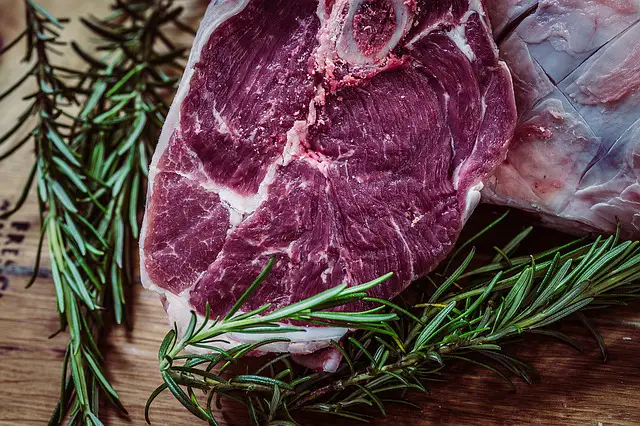Wild Game Food Nutrition Benefits
 Wild Game Food Nutrition Benefits
thegearhunt.com
Wild Game Food Nutrition Benefits
thegearhunt.com
The nutrition benefits associated with wild game food nutrition are largely recognizable and this has been reinforced by several health experts. While many people in today’s world are more at home with farm-raised sources of meat and protein, those who lived a century ago, had a different habit.
When a shopper walks into a grocery store, the labels on the meat might be a bit confusing. While the grass-fed label indicates organically bred meat –source, the free-range animals enjoy the benefit of unhindered roaming for the most part of the day. The free-range animal is also organically raised but has more food sources beyond grass. The outbreak of flu and other forms of avian diseases makes many people wary of meat that they cannot vouchsafe its source. However, wild game nutrition provides nutritive value that cannot be overlooked, as they are largely free of chemical and modified feedstock that are disruptive to human health.
The 8 benefits from wild game food
Benefit #1: Free of artificial hormones

Organic meals and food activists have highlighted the effect of GMO and organically modified substances on human health. When you eat wild game, you can be sure that you are not consuming meat laced with artificial hormones. Animals raised on artificial hormones and additives lead to higher incidence of antibiotic resistance among the human population. Wild game is always on the hunt for natural forage flora, which keeps them healthy and primed for human consumption. Anyone who has tasted wild game will agree that these are better tasting and rich in natural flavor that is lacking in meat from other sources.
Benefit #2: less offense to greenhouse sensitivity
Any factory process is likely to give rise to emissions that are offensive to greenhouse sensibilities. This explains while some species of micro-organisms have become extinct and drug-resistant bacteria have proliferated. Industrial processes also give rise to groundwater population, the release of harmful metals into the atmosphere and soil pollution, among others.
Benefit #3: lean meat abundance
Wild game is inevitably dug-in with a lifestyle that includes constant mobility. These animals have to roam to get food, run in the face of danger and walk to their sleeping pads.
It is easy to assume that farm-raised animals are also exposed to this routine of wild game, but, this is not so. Farm-raised animals have a certainty as to their food source and do not have to cover indeterminate distances to find what to eat. The wild game becomes lean from their mobility and this makes them fitter as a healthy meat source. In the preparation of several weight-loss supplements, (CLA) conjugated linoleic acid is used as a necessary ingredient. CLA is found in raw dairy products, pasture-fed animals, and wild game, and they provide a natural source of this anti-cancer dietary fat.
Benefit #4: dampened risk of ailments spread by meat sources

When animals are confined to any space and raised in their numbers, an associated risk of contamination and disease-outbreak increases. With the wild game, this risk is dampened as the array of food sources in the wild includes herbs that have a cleansing effect on the health of wildlife species. Space and the freedom to roam provide a balance that boosts the immunity of wild game, and this enhances the nutritional benefits they offer. On the flipside, factory-farmed animals are raised on unnatural feedstock, confinement and an environment that is open to contamination.
Benefit #5: processing contamination is avoided
The commercial processing of farmed animals makes it easy to transmit diseases from one animal to the other. When these animals are cut open in the abattoirs, blood splatters everywhere, and an infection can easily be spread. Any other food item processed in these environments is susceptible to the contamination that may arise if there is an infected animal among the lot. Health analysts have reported that up to 90 percent or more chicken processed for food are tainted by bacteria.
When ground beef is processed, an increased rate of contamination is present with the ravages of e.coli and salmonella not in doubt. Wild game processing in healthy and small holdings-type processing centers will be free of the risk associated with commercial meat types.
Benefit #6: Omega-3 fatty acids are abundant

It might not be commonplace to know that Omega 3s are not just found in Salmon alone. Wild game also provides a healthy dose of the most sought-after Omega-3s. Animals such as the elk have been reviewed to provide an ideal proportion of Omega-3s that is needed in the human diet. These reports by health practitioners make it clear that wild game is a healthy source of Omega 3 fatty acid.
Benefit #7: cost-benefit balance
It is true that wild game comes costlier than commercial meat alternatives like poultry and pork. However, to raise animals on grass or hunt wild game is not a cheap process. The mix of benefits derived from these wild game compared to the cost can be said to provide a balance that makes them affordable. Quality meat at a comparable price is a good score.
Benefit #8: no pink slime
Commercial processing of meat opens the human population to health hazards. Reports have emerged before now of pink slimes found in lunch packs and fast food deliveries. The content of pink slimes when analyzed was proven to be ammonia. While ammonia content is an ingredient used for the control of e.coli, it is high in toxic levels among a lot of processed meals.
Opting for the wild game will shield you from the effects of pink slime as it does not exist among animals in the wild. The process of processing wild game is also rid of intervals that necessitate chemical additives.
Wild game food nutrition benefits are more than a handful and it is not out of place if you decide to opt for this meat source today.















